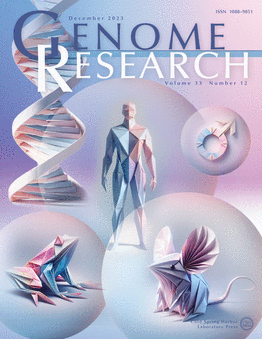A novel multislice framework for precision 3D spatial domain reconstruction and disease pathology analysis
IF 5.5
2区 生物学
Q1 BIOCHEMISTRY & MOLECULAR BIOLOGY
引用次数: 0
Abstract
The development of spatial transcriptomics (ST) technologies has revolutionized the way we map the complex organization and functions of tissues. These technologies offer valuable insights into the organization and function of complex biological systems. However, existing methods often focus too narrowly on single modalities or resolutions, thereby hindering the comprehensive capture of multilayered biological heterogeneity. Here, STMSC is proposed as a multislice joint analysis framework featuring a precorrection mechanism that enables the precise identification of complex spatial domains, advancing disease pathology insights. STMSC assumes that precise three-dimensional (3D) reconstruction is essential for an in-depth investigation of tissue components and mechanisms. Incorporating hematoxylin and eosin (H&E) imaging data, STMSC enhances slice alignment accuracy in 3D reconstruction. By deconstructing microenvironments, it reconstructs fine-grained cellular landscapes and emphasizes collective cellular behavior in defining spatial domains. Its graph attention autoencoder with precorrection balances biological information at different levels, improving the accuracy of ST analyses. By analyzing consecutive tissue slices and pathological data sets, STMSC accurately reconstructs 3D structures and provides deeper insights into complex cancer environments. Specifically, STMSC captures intra- and interstage heterogeneity in cancer development, offering novel insights into the complexity of pathological tissue structures.一种用于精确三维空间域重建和疾病病理分析的新型多层框架
空间转录组学(ST)技术的发展已经彻底改变了我们绘制复杂组织和组织功能的方式。这些技术为复杂生物系统的组织和功能提供了有价值的见解。然而,现有方法往往过于狭隘地关注单一模式或分辨率,从而阻碍了对多层生物异质性的全面捕获。在这里,STMSC被提出作为一个多切片联合分析框架,具有预校正机制,能够精确识别复杂的空间域,推进疾病病理见解。STMSC认为精确的三维(3D)重建对于深入研究组织成分和机制至关重要。结合苏木精和伊红(H&;E)成像数据,STMSC提高了三维重建中的切片对准精度。通过解构微环境,它重建了细粒度的细胞景观,并强调了定义空间域的集体细胞行为。它的图注意自动编码器与预校正平衡生物信息在不同的水平,提高ST分析的准确性。通过分析连续的组织切片和病理数据集,STMSC可以准确地重建3D结构,并为复杂的癌症环境提供更深入的了解。具体来说,STMSC捕获了癌症发展中的期内和期间异质性,为病理组织结构的复杂性提供了新的见解。
本文章由计算机程序翻译,如有差异,请以英文原文为准。
求助全文
约1分钟内获得全文
求助全文
来源期刊

Genome research
生物-生化与分子生物学
CiteScore
12.40
自引率
1.40%
发文量
140
审稿时长
6 months
期刊介绍:
Launched in 1995, Genome Research is an international, continuously published, peer-reviewed journal that focuses on research that provides novel insights into the genome biology of all organisms, including advances in genomic medicine.
Among the topics considered by the journal are genome structure and function, comparative genomics, molecular evolution, genome-scale quantitative and population genetics, proteomics, epigenomics, and systems biology. The journal also features exciting gene discoveries and reports of cutting-edge computational biology and high-throughput methodologies.
New data in these areas are published as research papers, or methods and resource reports that provide novel information on technologies or tools that will be of interest to a broad readership. Complete data sets are presented electronically on the journal''s web site where appropriate. The journal also provides Reviews, Perspectives, and Insight/Outlook articles, which present commentary on the latest advances published both here and elsewhere, placing such progress in its broader biological context.
 求助内容:
求助内容: 应助结果提醒方式:
应助结果提醒方式:


